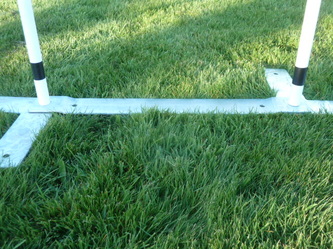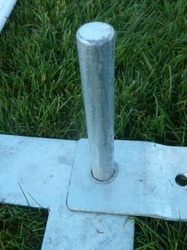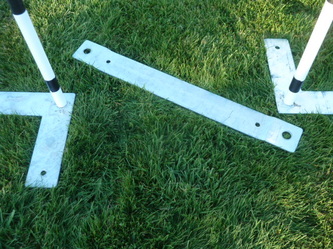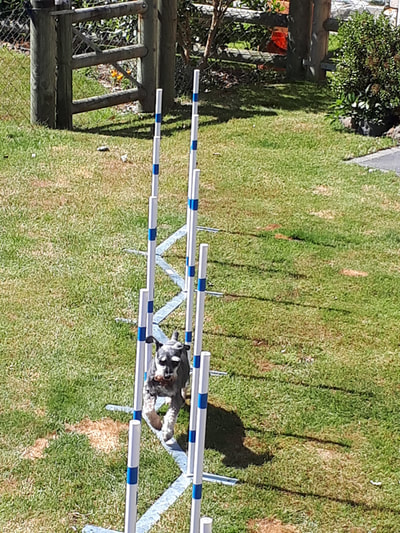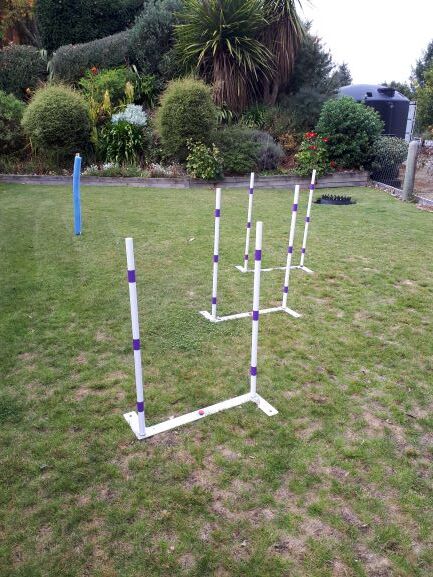2x2 Weave Trainers
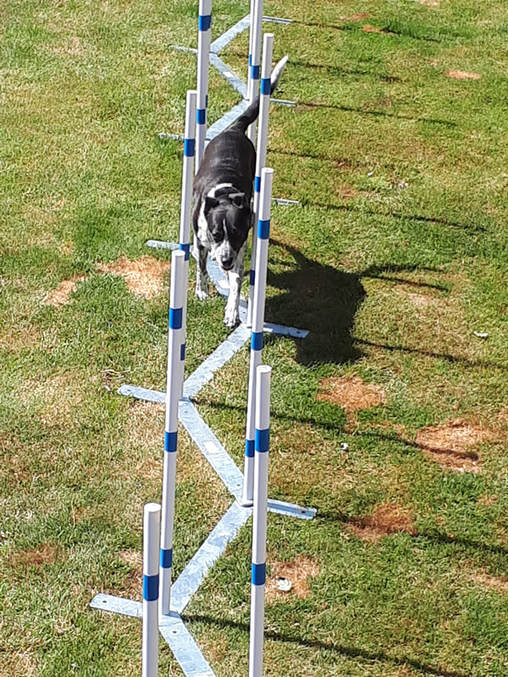
TOP SELLER!!
Profile cut, from 5mm mild steel, and hot dip galvanised for long life, convenient and durable. Portable enough for transportation.
They're supplied with poles, banded with your colour of choice. (Black, Blue, Green, Red, Yellow, Purple, Orange or some combination).
A six pole set comprises three base units, and two bridges, those wanting 12 pole sets, we supply an additional ($30) bridge unit to join sets.
2 pole unit $80.00 + GST
Bridge unit $30.00 + GST
Total for 6 pole set $300.00 + GST
New prices effective 1st February 2022
Profile cut, from 5mm mild steel, and hot dip galvanised for long life, convenient and durable. Portable enough for transportation.
They're supplied with poles, banded with your colour of choice. (Black, Blue, Green, Red, Yellow, Purple, Orange or some combination).
A six pole set comprises three base units, and two bridges, those wanting 12 pole sets, we supply an additional ($30) bridge unit to join sets.
2 pole unit $80.00 + GST
Bridge unit $30.00 + GST
Total for 6 pole set $300.00 + GST
New prices effective 1st February 2022
Whilst we don't run classes and do not profess to be trainers, both Sarah and Lyn have been instructed by some pretty neat folk and for the sake of anyone starting out we share a few pointers that we found useful.
Dogs are very astute but they neither read nor understand human sentences. It is important to get the dog offering the required behaviour before putting a command to the action. Often we see folk practising their dog through a straight set of poles using what we call the pause and stagger method. More often than not the dog is being praised for it's technical excellence but what we mostly forget is that the praise is being accepted by the dog that everything to do with that motion is correct. It's great to praise but if you are praising at that stage what you will create is a dog with technical excellence BUT executed in slow motion. It is difficult to speed a dog up later in it's career if it has had lavish praise for weaving slowly. The pics above show a number of examples with the poles set up as a channel, which can be executed at speed right form the early stages.
The last pic above shows how to set up 2x2 units to be used as a channel. For experienced handlers the following explanation will come as no surprise but for those just starting an agility journey the following steps will be very helpful in creating a dog with fast and technically excellent weave conduct:-
# To set up to use this function, lay the weaves out in a regular straight format and using appropriate pegs nail through the holes in the middle of the two pole bases, (but not too tight to the ground).
# Remove all the link pieces (bridges) and then turn each of the 6 bases through 45 degress. (Turn must be clockwise).
# You will then have a simple (very wide) channel for puppies to get used to. Then as confidence builds simply kick each base a little anti-clockwise. (Narrowing the channel).
# If the dog fails, open a tad until they are confident completing at speed, and then cunningly kick back in small increments.
# Repeat, repeat, repeat........ Failure happens - widen a tad. Success happens 2-3 times - narrow a tad.
# When the poles get close to straight, the bridges can be re-installed.
This concept is only possible if you have a relatively new set with a hole already in the bases. If your set is older then you may have to drill your own holes in the centre of the two pole bases.
Below are a pair of Youtube links of our two new puppies (Not quite 18 months old at the time of filming) both of whom were trained to this level over a number of weeks. Sarah spent a long time having fun with the dogs and a very open stage of channel, both to avoid over-working young and tender spines and building high value in the "poles" game. Each daily session was never more than 10 minutes in total.
https://www.youtube.com/watch?v=ntLg43wsS2A https://www.youtube.com/watch?v=Cj-GLqrE_oQ
Dogs are very astute but they neither read nor understand human sentences. It is important to get the dog offering the required behaviour before putting a command to the action. Often we see folk practising their dog through a straight set of poles using what we call the pause and stagger method. More often than not the dog is being praised for it's technical excellence but what we mostly forget is that the praise is being accepted by the dog that everything to do with that motion is correct. It's great to praise but if you are praising at that stage what you will create is a dog with technical excellence BUT executed in slow motion. It is difficult to speed a dog up later in it's career if it has had lavish praise for weaving slowly. The pics above show a number of examples with the poles set up as a channel, which can be executed at speed right form the early stages.
The last pic above shows how to set up 2x2 units to be used as a channel. For experienced handlers the following explanation will come as no surprise but for those just starting an agility journey the following steps will be very helpful in creating a dog with fast and technically excellent weave conduct:-
# To set up to use this function, lay the weaves out in a regular straight format and using appropriate pegs nail through the holes in the middle of the two pole bases, (but not too tight to the ground).
# Remove all the link pieces (bridges) and then turn each of the 6 bases through 45 degress. (Turn must be clockwise).
# You will then have a simple (very wide) channel for puppies to get used to. Then as confidence builds simply kick each base a little anti-clockwise. (Narrowing the channel).
# If the dog fails, open a tad until they are confident completing at speed, and then cunningly kick back in small increments.
# Repeat, repeat, repeat........ Failure happens - widen a tad. Success happens 2-3 times - narrow a tad.
# When the poles get close to straight, the bridges can be re-installed.
This concept is only possible if you have a relatively new set with a hole already in the bases. If your set is older then you may have to drill your own holes in the centre of the two pole bases.
Below are a pair of Youtube links of our two new puppies (Not quite 18 months old at the time of filming) both of whom were trained to this level over a number of weeks. Sarah spent a long time having fun with the dogs and a very open stage of channel, both to avoid over-working young and tender spines and building high value in the "poles" game. Each daily session was never more than 10 minutes in total.
https://www.youtube.com/watch?v=ntLg43wsS2A https://www.youtube.com/watch?v=Cj-GLqrE_oQ

